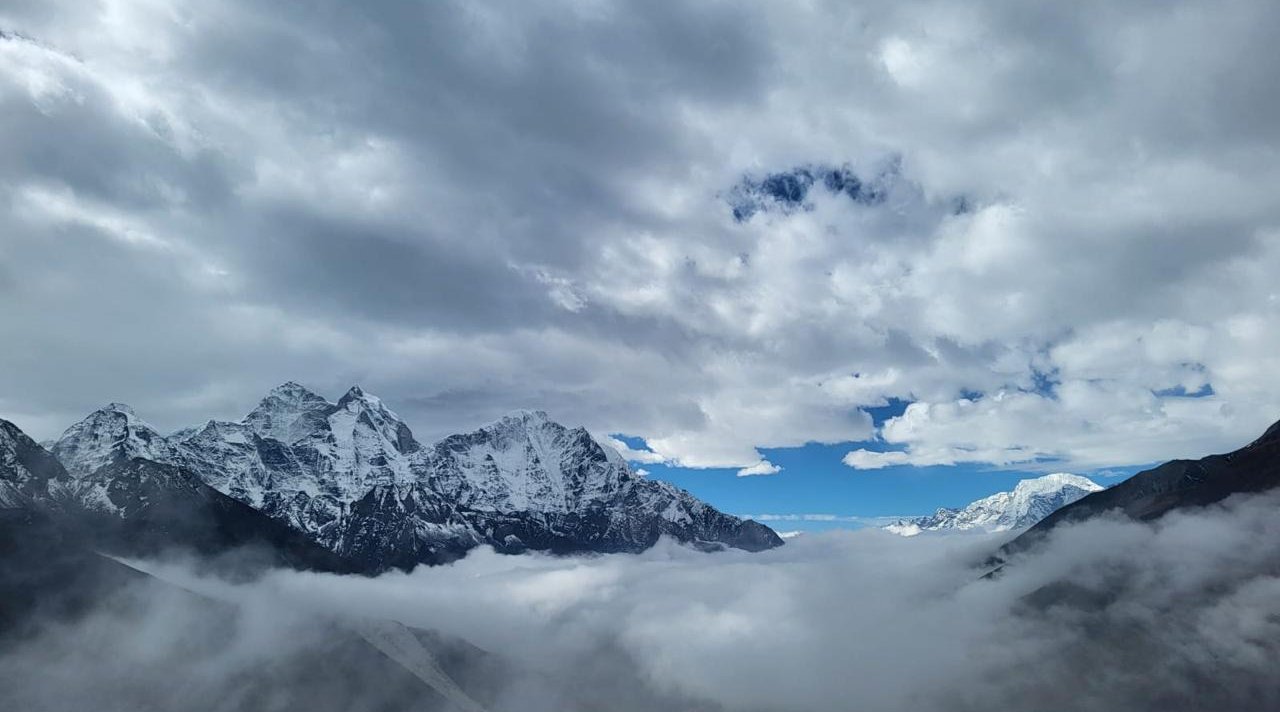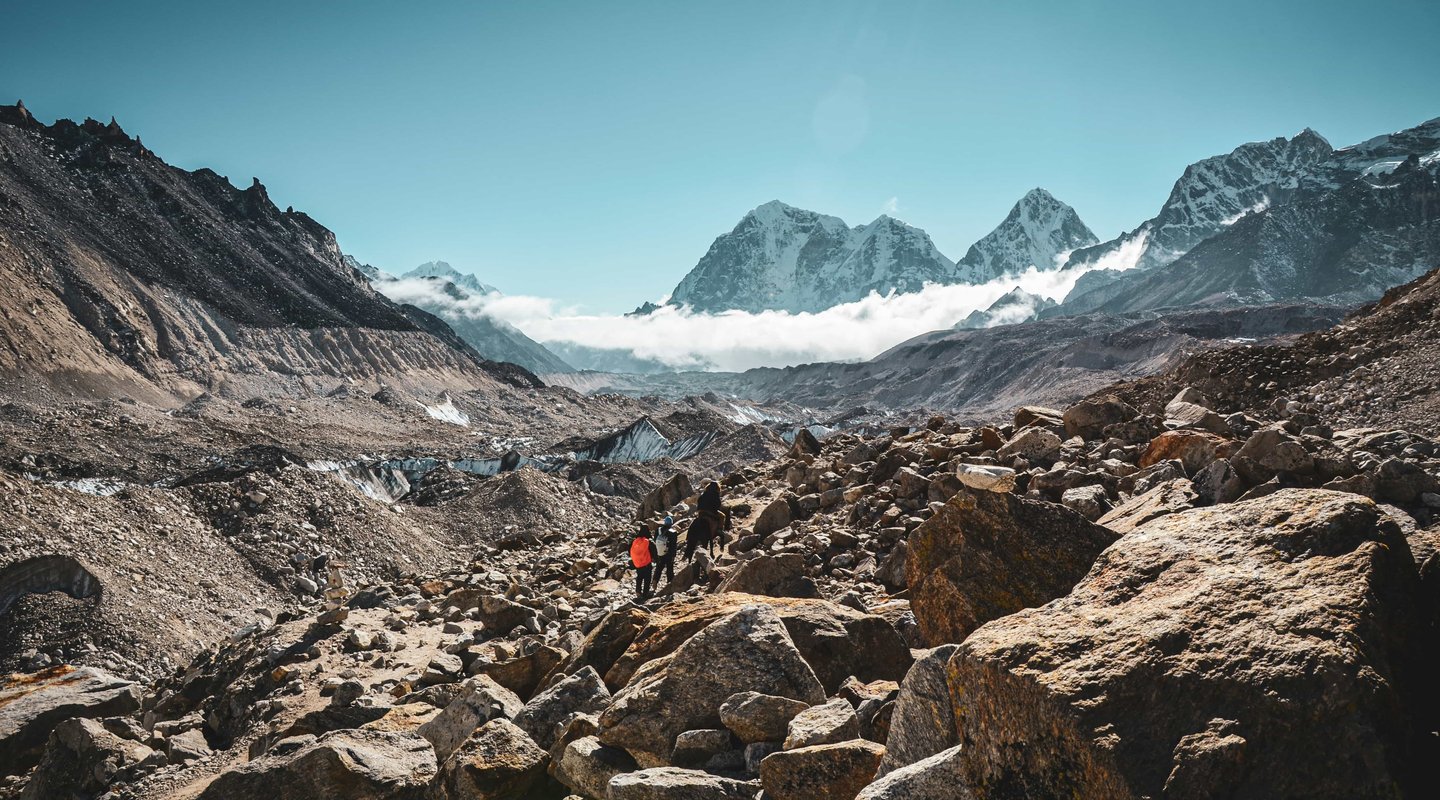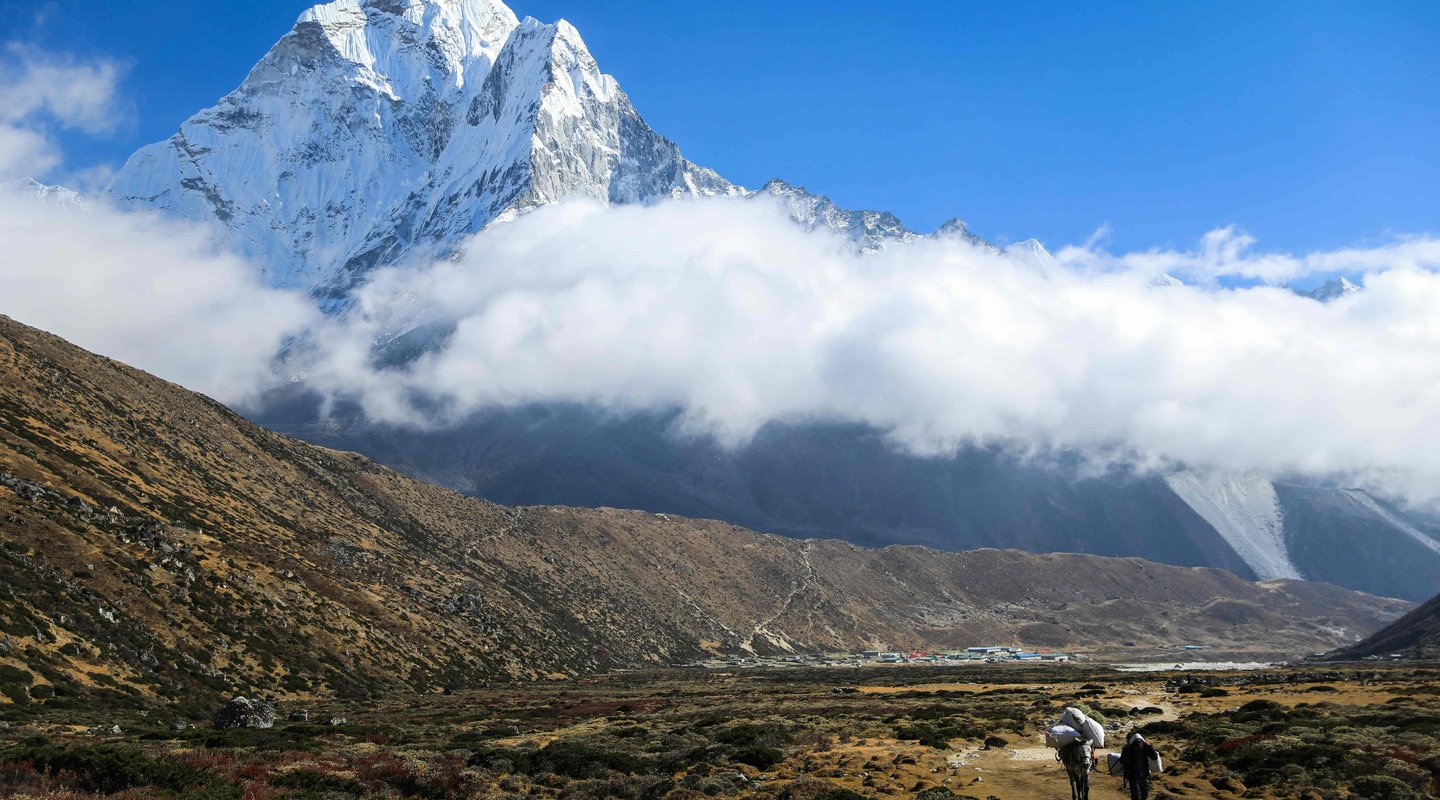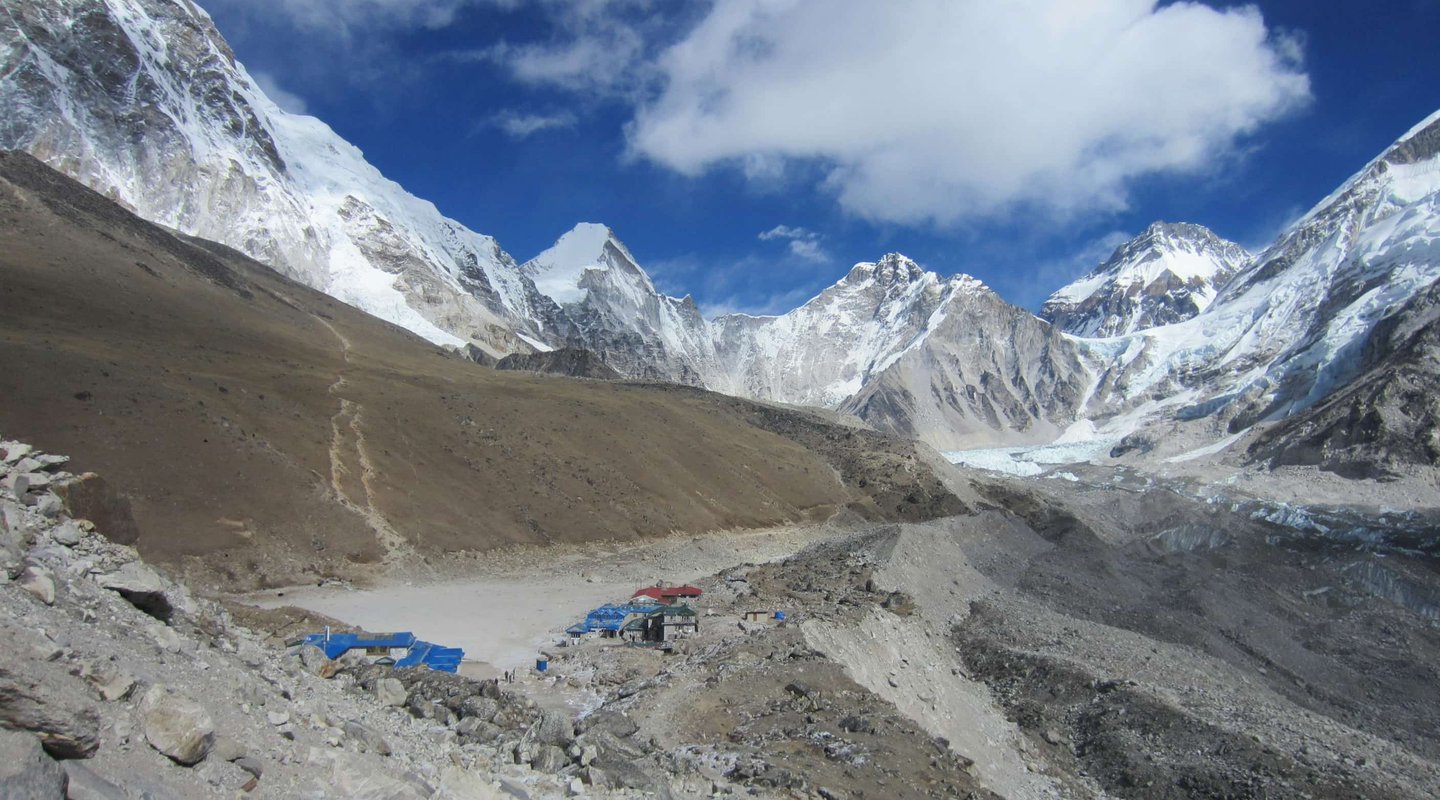Picture yourself standing on a rugged glacial moraine, prayer flags fluttering in the thin mountain air, with the mighty Everest towering above you like a frozen giant. This is Everest Base Camp – the ultimate destination for adventure seekers worldwide. But how high is Everest Base Camp exactly?
The answer isn't as straightforward as you might think. South Base Camp in Nepal sits at 5,364 meters (17,598 feet), while North Base Camp in Tibet rests at 5,150 meters (16,900 feet). These elevations can vary slightly due to glacier movement and seasonal changes, but one thing remains constant: you're standing higher than most peaks in the Alps or Rockies!
Whether you're an aspiring trekker planning your first high-altitude adventure or a researcher gathering information about the world's most famous base camp, this comprehensive guide will equip you with everything you need to know about the Everest Base Camp elevation and the incredible journey to reach it.
Understanding Everest Base Camp Elevation and Terrain
The Tale of Two Base Camps
When discussing how high is Everest Base Camp in meters, it's crucial to understand that Mount Everest has two base camps:
South Base Camp (Nepal Side):
- Elevation: 5,364 meters (17,598 feet)
- Located on the Khumbu Glacier
- Accessed via the classic EBC trek from Lukla
- Part of Sagarmatha National Park
- More popular among trekkers
North Base Camp (Tibet Side):
- Elevation: 5,150 meters (16,900 feet)
- Accessible by vehicle via the Friendship Highway
- Near the historic Rongbuk Monastery
- Less crowded but requires special permits
The North vs South Everest Base Camp height difference of approximately 214 meters might seem minimal, but each camp offers unique experiences and challenges.
Navigating the Khumbu Glacier
The South Base Camp sits directly on the Khumbu Glacier, a moving river of ice that creates an ever-changing landscape. This dynamic environment means:
- The exact elevation can shift by several meters annually
- Trekkers must navigate unstable moraine paths
- The famous Khumbu Icefall begins just above base camp
- Climate change and glacier melting impacts are increasingly visible
Insert altitude chart showing elevation profile from Lukla to EBC here
Elevation Gain Throughout Your Trek
Understanding the Everest Base Camp trek altitude gain helps you prepare mentally and physically:
- Starting point (Lukla): 2,860 meters (9,383 feet)
- Total elevation gain: Approximately 2,500 meters (8,200 feet)
- Daily gains: 200-600 meters, depending on the itinerary
- Highest point on Everest Base Camp trek: Kala Patthar at 5,545 meters (18,192 feet)
Trek Preparation: Essential Steps for High Altitude Success
Permits and Documentation
Before tackling the altitude in meters at EBC, you'll need:
- Sagarmatha National Park Permit (NPR 3,000)
- Khumbu Pasang Lhamu Rural Municipality Permit (NPR 2,000)
- TIMS Card (Trekkers' Information Management System)
- Valid passport and travel insurance covering high-altitude rescue
Physical Fitness Training
The high altitude trekking demands of EBC require serious preparation:
- Cardiovascular training: 4-6 months of regular hiking, running, or cycling
- Strength training: Focus on legs, core, and back muscles
- Altitude simulation: If possible, train at elevation or use altitude masks
- Practice hikes: Weekend treks with a loaded backpack (10-15kg)
Essential Gear for High Altitude Everest Trek
Your gear for high altitude Everest trek can make or break your experience:
Clothing Layers:
- Base layers (merino wool or synthetic)
- Insulating mid-layers
- Down jacket (-20°C rated)
- Waterproof outer shell
- Trekking pants and shorts
Footwear and Accessories:
- Sturdy trekking boots (broken in!)
- Camp shoes for tea houses
- Warm hat and sun hat
- Glacier glasses (UV protection)
- Gloves (liner + insulated)
Technical Gear:
- Sleeping bag (-15°C minimum)
- Trekking poles
- Headlamp with extra batteries
- Water purification tablets
- First aid kit with altitude medication
Costs and Porter Services
Budget considerations for your EBC adventure:
- Total trek cost: $1,500-$4,000 per person
- Porter service: $20-25 per day (highly recommended)
- Guide fees: $25-35 per day
- Accommodation (teahouses): $5-10 per night
- Meals: $25-35 per day
Health and Safety at High Altitude
Understanding Altitude Sickness at Everest Base Camp
The oxygen levels at EBC are approximately 50% of sea level, making altitude sickness prevention crucial:
Acute Mountain Sickness (AMS) Symptoms:
- Headache (most common)
- Nausea and loss of appetite
- Fatigue and weakness
- Dizziness and lightheadedness
- Difficulty sleeping
Severe Altitude Conditions:
- HAPE (High Altitude Pulmonary Edema): Fluid in lungs
- HACE (High Altitude Cerebral Edema): Brain swelling
- Both require immediate descent and medical attention
How to Acclimatize for Everest Base Camp
Proper acclimatization days are non-negotiable:
- Follow the golden rule: Climb high, sleep low
- Ascend gradually: No more than 300-500m per day above 3,000m
- Rest days: Mandatory stops at Namche Bazaar (3,440m) and Dingboche (4,410m)
- Hydration: Drink 3-4 liters of water daily
- Avoid alcohol: It dehydrates and impairs acclimatization
Emergency Protocols
The emergency helicopter service at high altitude:
- Heliport at base camp: Limited to emergency evacuations
- Response time: 30 minutes to several hours (weather dependent)
- Cost: $4,000-$8,000 (ensure insurance coverage)
- Alternative: Portable altitude chambers (Gamow bags) at some lodges
Day-by-Day Itinerary and Route
Classic EBC Trek from Lukla
The trekking route from Lukla follows ancient Sherpa trading paths:
Day 1-2: Lukla to Namche Bazaar
- Distance: 13.5 km
- Elevation: 2,860m to 3,440m
- Highlights: Hillary Bridge, first Everest views
Day 3: Acclimatization at Namche
- Explore Sherpa villages
- Visit Everest View Hotel (3,880m)
- Rest and hydrate
Day 4-5: Namche to Tengboche
- Distance: 10 km
- Elevation: 3,440m to 3,870m
- Highlights: Tengboche Monastery, Ama Dablam views
Day 6-7: Tengboche to Dingboche
- Distance: 11 km
- Elevation: 3,870m to 4,410m
- Note: Enter the high-altitude zone
Day 8: Acclimatization at Dingboche
- Hike to Chukhung Valley
- Practice "climb high, sleep low"
Day 9-10: Dingboche to Lobuche
- Distance: 8.5 km
- Elevation: 4,410m to 4,910m
- Terrain: Glacial moraines begin
Day 11: Lobuche to Gorak Shep
- Distance: 4.5 km
- Elevation: 4,910m to 5,140m
- Final push before base camp
Day 12: The Summit Day - Gorak Shep to EBC
- Distance: 3 km each way
- Everest Base Camp elevation from Lukla: Total gain of 2,504m
- Celebration at 5,364m!
Alternative Routes and Side Trips
Kala Patthar Summit:
- Kala Patthar height: 5,545 meters (18,192 feet)
- Best sunrise views of Everest
- Additional 400m climb from Gorak Shep
Helicopter to Base Camp:
- Direct flight from Kathmandu
- Stops at Lukla for refueling
- Everest Base Camp helicopter altitude limitations above 5,000m
- Cost: $1,000-$4,500 per person
Comparing EBC to Other Adventures
Everest Base Camp vs Kilimanjaro Height
Many trekkers wonder about Everest Base Camp vs Kilimanjaro height:
Mount Kilimanjaro:
- Summit: 5,895 meters (19,341 feet)
- Base camps: 3,700-4,700 meters
- Trek duration: 5-9 days
- Success rate: 65-85%
Everest Base Camp:
- Elevation: 5,364 meters
- Trek duration: 12-14 days
- Success rate: 90-95% (with proper acclimatization)
- More gradual altitude gain
Everest Base Camp vs Summit Differences
Understanding Everest Base Camp vs summit differences puts your achievement in perspective:
- Mount Everest height from base camp: 3,484 meters higher
- Summit elevation: 8,849 meters (29,032 feet)
- Death zone: Begins at 8,000 meters
- Oxygen at summit: 33% of sea level
- Temperature difference: Up to 30°C colder at summit
Alternative Treks in the Region
Gokyo Lakes Trek:
- Maximum elevation: 5,357m (Gokyo Ri)
- Stunning turquoise lakes
- Less crowded than EBC
- Can be combined with EBC
Logistics and Best Time to Trek
Best Season for Trek
Choosing the best time to trek to Everest Base Camp significantly impacts your experience:
Spring Season (March-May):
- Pros: Stable weather, rhododendron blooms, climbing season excitement
- Cons: Crowded trails, higher prices
- Temperature at EBC: -5°C to -15°C
Autumn Season (September-November):
- Pros: Clear mountain views, festive atmosphere, stable weather
- Cons: Popular season, book accommodations early
- Temperature at EBC: -10°C to -20°C
Off-Season Considerations:
- Winter: Extreme cold but crystal-clear views
- Monsoon: Challenging weather, possible flight delays
Weather at High Altitude
The weather at high altitude presents unique challenges:
- Temperature drops: 6°C per 1,000m elevation gain
- UV radiation: Increases 10-12% per 1,000m
- Wind chill: Can make -15°C feel like -30°C
- Precipitation: Mostly snow above 4,000m
Transportation and Accommodation
Flight to Lukla:
- Duration: 25-30 minutes from Kathmandu
- Weather dependent (frequent delays)
- Alternative: Helicopter charter
- Book flexible dates
Accommodations (Teahouses):
- Basic twin-sharing rooms
- Common dining areas with heating
- Limited electricity and hot water
- Food on trek: Dal bhat, noodles, potatoes, tea
Yak Transport and Local Culture
The iconic yak transport system:
- Yaks and yak-cow hybrids carry supplies above 3,000m
- Each can carry 60-80kg
- Essential for base camp logistics
- Respect right of way on trails
Sherpa Villages and Culture:
- Traditional stone houses
- Buddhist monasteries and stupas
- Warm hospitality
- Rich mountaineering heritage
Environmental Considerations
Glacier Melting Impact
The glacier melting impact on EBC is increasingly visible:
- Base camp location shifts annually
- New lakes forming on glaciers
- Increased rockfall risk
- Changes in trekking routes
Sustainable Trekking Practices
- Carry reusable water bottles
- Pack out all trash
- Support local businesses
- Respect sacred sites
- Minimize plastic use
Planning Your EBC Adventure
Final Preparation Checklist
Before tackling how high is Everest Base Camp in feet (17,598), ensure:
✓ Physical fitness assessment ✓ Comprehensive travel insurance ✓ Altitude medication (Diamox) ✓ Flexible itinerary ✓ Emergency contacts ✓ Mental preparation
Budget Breakdown
Total estimated costs:
- Budget trek: $1,500-2,000
- Standard trek: $2,500-3,000
- Luxury trek: $4,000-6,000
- Helicopter tour: $1,000-4,500
Frequently Asked Questions
How hard is Everest Base Camp trek?
The trek is challenging but achievable for fit individuals. The main difficulties are altitude, cold temperatures, and 5-8 hours of daily walking on rough terrain.
What's the Everest Base Camp trek distance and height?
The round-trip covers approximately 130km with a total elevation gain of 2,500m from Lukla to EBC.
Can I prevent altitude sickness at Everest Base Camp?
While you can't guarantee prevention, proper acclimatization, hydration, and gradual ascent significantly reduce risks. Consider preventive medication after consulting a doctor.
What's the highest point on Everest Base Camp trek?
Kala Patthar at 5,545m offers the highest accessible viewpoint, 181m higher than base camp itself.
How does Everest Base Camp height above sea level affect my body?
At 5,364m, your body receives only 50% of the oxygen found at sea level, affecting everything from sleep quality to physical performance.
Conclusion: Your High-Altitude Adventure Awaits
Standing at Everest Base Camp's elevation of 5,364 meters represents more than just reaching a destination – it's a testament to human determination and the desire to touch the edges of possibility. Whether you're drawn by the challenge of high altitude trekking, the stunning Himalayan landscapes, or the rich Sherpa culture, the journey to EBC transforms everyone who undertakes it.
The question "How high is Everest Base Camp?" has a simple numerical answer, but the experience of reaching that altitude is anything but simple. It's a carefully orchestrated dance with thin air, a test of physical and mental fortitude, and ultimately, one of the world's most rewarding adventures.
As you plan your trek, remember that success at altitude comes from respecting the mountains, preparing thoroughly, and listening to your body. The Khumbu Glacier awaits, prayer flags flutter in anticipation, and somewhere high above, Everest's summit pierces the jet stream.
Ready to start your Everest Base Camp adventure? Begin your preparation today, and in a few months, you could be standing at one of the most iconic destinations on Earth. The mountains are calling – will you answer?
For more trekking guides and preparation tips, explore our other Himalayan adventure articles or contact our expert team to help plan your perfect EBC trek.








